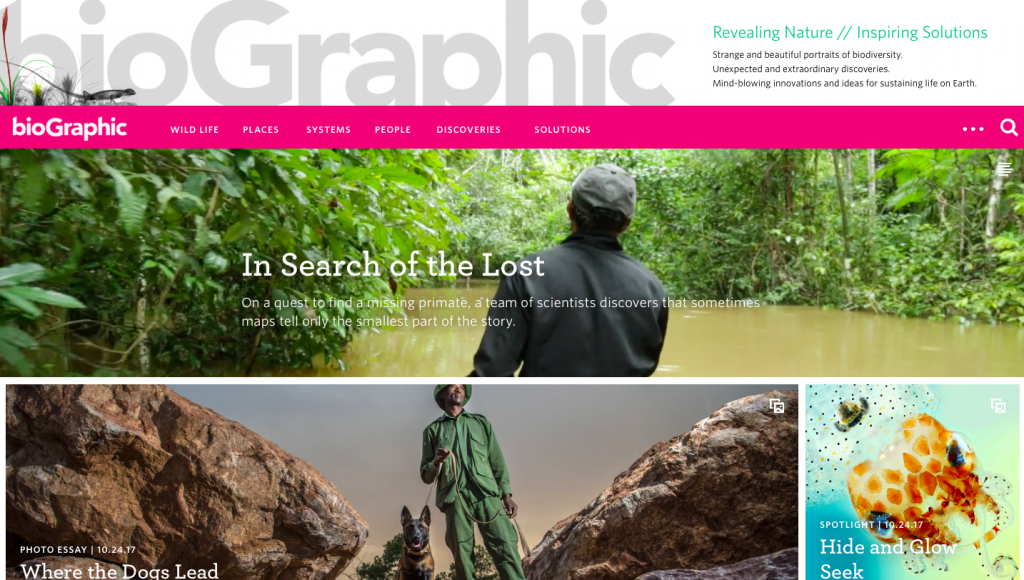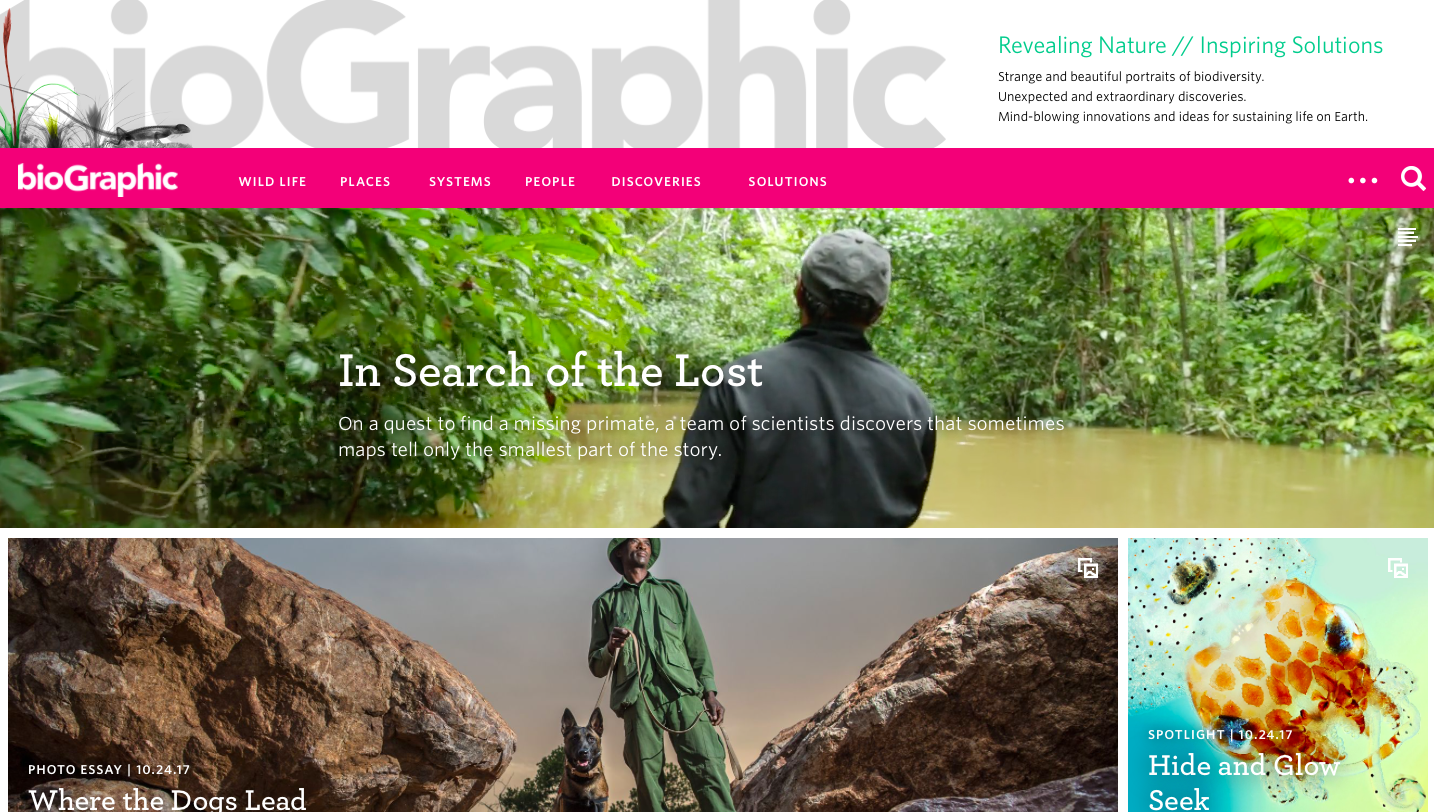The Future Needs Funding: The Persistent Struggles of Digital Science Magazines

Digital science magazine bioGraphic.
SAN FRANCISCO—For quite some time, the words “the future is now” have been chasing us. Our collective imagination envisions a tomorrow filled with holograms, interactive media and 3D images. But when we look around, we realize that day may not come soon. However, one thing has visibly changed: digital content is more present than ever. Science magazines have slowly seized this opportunity.
The first non-profit independent digital science magazine, Grist, was created in 1999. Nearly two decades later, the challenge to engage with a young, demanding public—and to be financially self-sufficient—still lingers.
The fit should be perfect: communicating science and technology through science and technology. But as discussed by five journalists in the panel “The Rise of Digital Science Magazines” on 27 October at the World Conference of Science Journalists 2017, this is not the case.
Unpredictable audiences
Even with the advent of social media like Facebook and Twitter, standing out amidst a sea of viral, trivial content and attracting new visitors is hard. Keeping them loyal is even harder, the panelists agreed.
It is difficult to pinpoint what makes a story popular, said Estrella Burgos, editor-in-chief of ¿Cómo ves?, a Mexican science magazine for young readers with print and digital versions. “Sometimes, things you don’t think are going to be a hit, are [so],” Burgos said.
However, the speakers said editorial decisions should not be guided exclusively by how much a story is “liked” or viewed. “Just because people like candy, that doesn’t mean we have to keep feeding them candy all the time,” said Rebecca Tan, managing editor of Asian Scientist Magazine, based in Singapore.
Stories come from different sources and are aimed at different publics. Magazines such as bioGraphic, from the United States, and Earth Touch News, from South Africa, depend on freelance writers and journalists, as well as staff writers. They are aimed at general, non-specialized audiences. Sapiens is aimed at a popular audience and is written by both professional anthropologists and journalists.
To shift from the printed model to a digital format, magazines have adopted a highly visual approach of storytelling, invading viewers’ screens with breathtaking images and using fewer words. As Steven Bedard, editor-in-chief of bioGraphic, pointed out, using beautiful photographs that no one’s ever seen is a highly effective method to retain a crowd. But even this can’t guarantee success.
Limited funding
Even though journalists trying to break into the digital market have big dreams and goals—like inspiring young readers and fostering critical thinking—it’s expensive to produce interactive multimedia, original visual content and a responsive app that doesn’t jam at the slightest internet problem.
Current financing models cannot pay for all of it. Today, not one digital science magazine relies solely on paying customers. Whether they’re successful or not, all of them depend on private or institutional funding.
Institutions may attempt to use magazines as their "edgy" public information outlets.
This means the final outcome could be directly or indirectly influenced by the type of institution backing the publication. bioGraphic is economically associated with the California Academy of Sciences in San Francisco, which gives the editors creative and editorial freedom. Others, like ¿cómo ves? and Sapiens, which is financed by the Wenner-Gren Foundation for Anthropological Research, have more complex relationships with their funders.
Sometimes, institutions or organizations might bring their interests and perspectives to the table and attempt to use magazines as their “edgy PIOs,” or public-information outlets. But for now, both ¿cómo ves? and Sapiens have managed to maintain their vision and remain editorially independent.
The matter of science magazines actually rising will depend on fine-tuning these aspects: maintaining journalistic objectivity to tell stories that matter, getting sufficient funding without sacrificing editorial independence, and listening to what people want. In the end, the panelists concurred, science journalism is an audience-driven endeavor.
—
Correction and clarification, 8 November: An earlier version of this story incorrectly described Sapiens as aimed at, and mainly written by, professional anthropologists. The story also did not clarify that despite their relationships with funders, both ¿cómo ves? and Sapiens remain editorially independent.
—
Inés Gutierrez is an undergraduate student in biology at UNAM, Mexico City, and a freelance science writer. She also creates visual images using different types of microscopes to accompany music and create an audiovisual experience. Contact her at nesnes324@gmail.com and follow her on Instagram.






